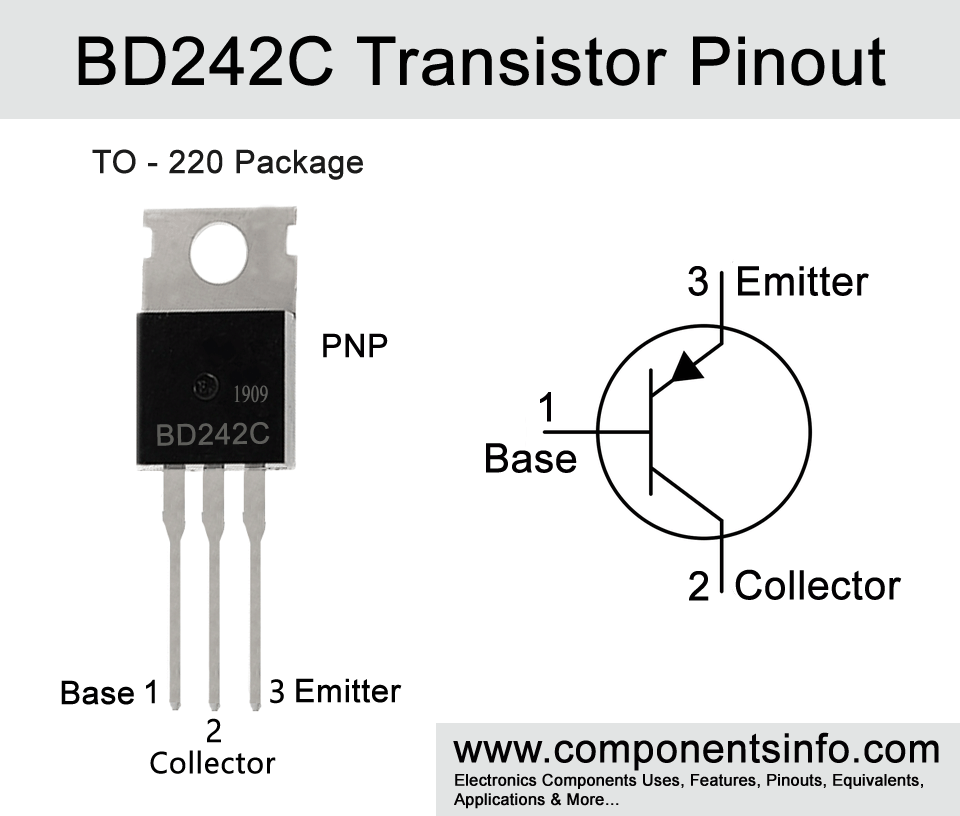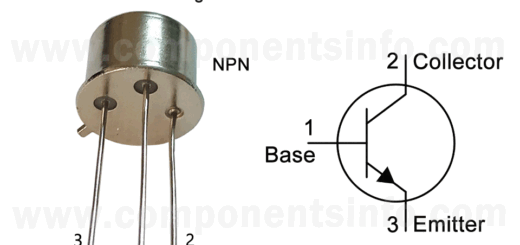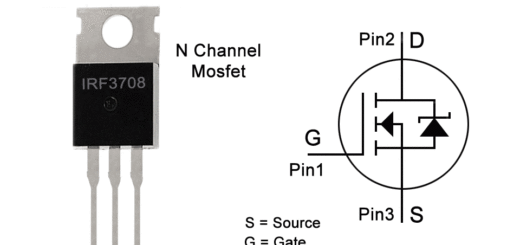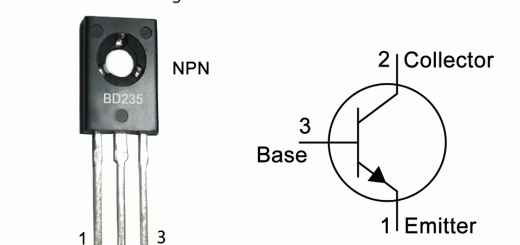BD242C Transistor Pinout, Applications, Equivalents, Where and How to Use and More
BD242C is a PNP medium power transistor available in TO-220 package. In this post we will understand BD242C transistor pinout, applications, equivalents, where and how to use and other important features of this device.
Absolute Maximum Ratings:
- Package Type: TO-220
- Transistor Type: PNP
- Max Collector Current(IC): -3A
- Max Collector-Emitter Voltage (VCEO): -100V
- Max Collector-Base Voltage (VCBO): -115V
- Max Emitter-Base Voltage (VEBO): -5V
- Max Collector Power Dissipation (PC): 40W
- Max Transition Frequency (fT): 3 MHz
- Minimum & Maximum DC Current Gain (hFE): 10 to 25
- Max Storage & Operating temperature Should Be: -65 to +150 Centigrade
NPN Complementary:
The NPN complimentary of BD242C is BD241C
Replacement and Equivalent:
TIP132, TIP122, TIP102, MJF6388, MJF15030, KTC2018, BDX53D, BDX53C, BDX33C, BDW93C, BDW73C, BDW63C, BDW43, BDW42, BDT87, BDT85, BDT63C, BD939, BD801, BD649, BD543C, BD539C, 2SD866A, 2SD633, 2SD560, 2SD525, 2SD363, 2SD2495, 2SD2059, 2SD1892, 2SD1829, 2SD1415/A, 2SD1407/A, 2SD1407, 2SD1355, 2SD1195.
BD242C Transistor Explained / Description:
BD242C is a transistor of BD242X series which also contains other transistors such as BD242, BD242A and BD242B. These PNP transistors comes in TO-220 package. The electrical characteristics of all these transistors are the same the only difference is their voltage ratings. So you can select them according to your load voltage requirements. The lowest voltage one is BD242 and the highest voltage one is BD242C.
There are also NPN complementary series of these transistors such as BD241, BD242A, BD242B and BD242C.
Looking at the absolute maximum ratings of BD242C, the collector current is -3A, collector-emitter voltage is -100V, emitter-base voltage is -5V, collector current in pulse is -5A, base current is -1A and collector dissipation is 40W.
Some of the electrical characteristics of the transistor are collector-emitter sustaining voltage is -100V, transition frequency is 3MHz and DC current gain is 10 to 25.
Where We Can Use it & How to Use:
As mentioned above the BD241C transistor is designed to be used in amplification and switching applications. So there are hundreds of applications that come under these two categories. But BD241C can also be used in variety of other applications. The detailed list of its applications can be found below under “Applications” heading.
The Using procedure of the transistor is same as we use any other BJT transistor.
Applications:
Motor Drivers
Inverter Circuits
Dimmers
Battery discharging circuits
Relay drivers circuits
Battery charger circuits
DC to AC Converters
Audio Amplifiers
Power converter circuits
Temperature Control Circuits
Variety of General Purpose Applications
Safe Operating Guidelines:
Here are some guidelines for using the transistor safely.
- To increase the life span of the transistor it is important not to use it on its absolute maximum ratings and always stay 20% below from its max ratings.
- The collector-emitter voltage of the transistor is 100V so according to the 20% rule you should drive load under 80V.
- Max collector current of the transistor is 3A but we will only use 2.4A.
- The operating and storing temperature is from -65°C to 150°C, so do not use it in any applications in which the internal and outer temperature will cross these limits.
Datasheet:
To download the datasheet just copy and paste the below link in your browser.
https://www.onsemi.com/pdf/datasheet/bd241c-d.pdf



